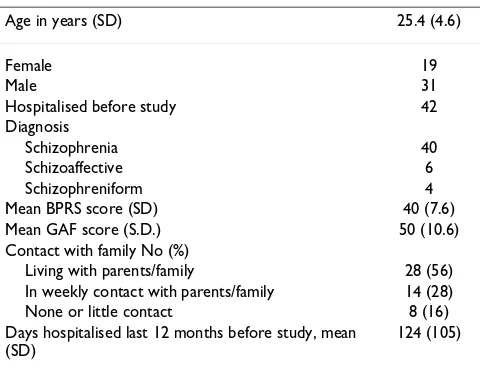Non adherence to antipsychotic medication, relapse and rehospitalisation in recent onset schizophrenia
Full text
Figure



Related documents
The operational definition is the model you can test for reliability and validity using the tools of science.. Once validated at some level, the operational definition could then
Ver¨offentlichungen, dass FPGA basierte Implementierungen 102 (@); 104 (@); 106 (@) eine interessante Alternative zu den oben beschriebenen Schaltungen darstellen. Im Vordergrund
Response functions were calculated by using the PHITS Monte Carlo simulation code and a MIRD mathematical human phantom placed in a vacuum. PHITS can simulate the transport of
In the present study, the length of growth and developmental stages and some biometrical parameters of tomato grown in winter greenhouse were investigated in relation to
When the results of the analysis were evaluated according to the Regulation of water pollution of Surface water quality management, the Kızılırmak river was
After determining stationary properties for the series, we investigated the existence of co-integration relationship between credit volume and current account deficit
ABSTRACT : The folding system is designed on a movable platform which above the bed and the stepping motor on the platform drives the strings fixed on the
In this study, patient knowledge about ARMD risk factors was low but patients appeared more optimistic than fearful when confronted with intraocular antivascular endothelial